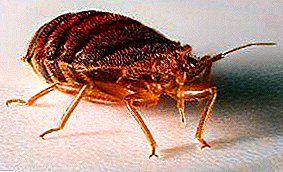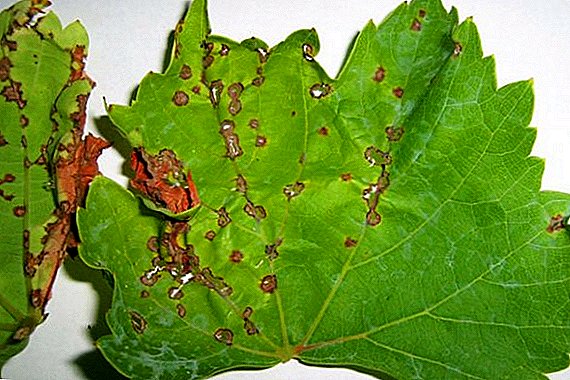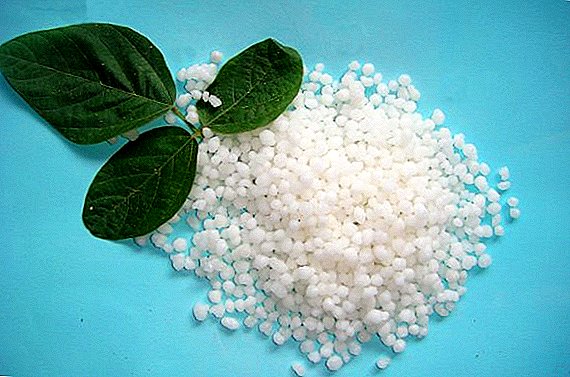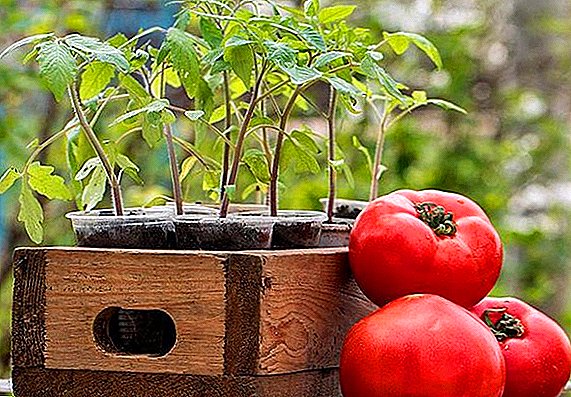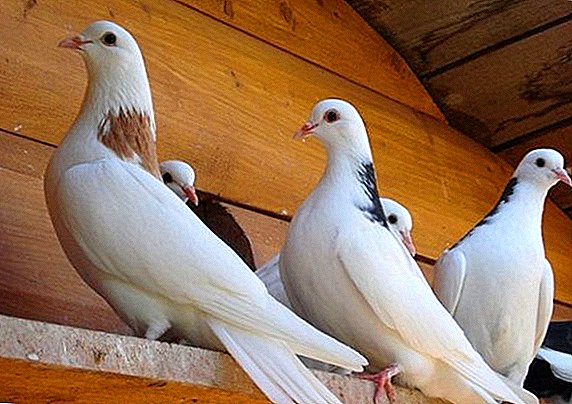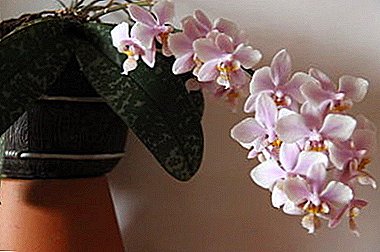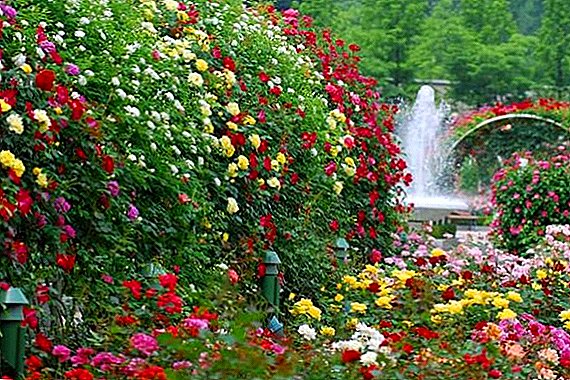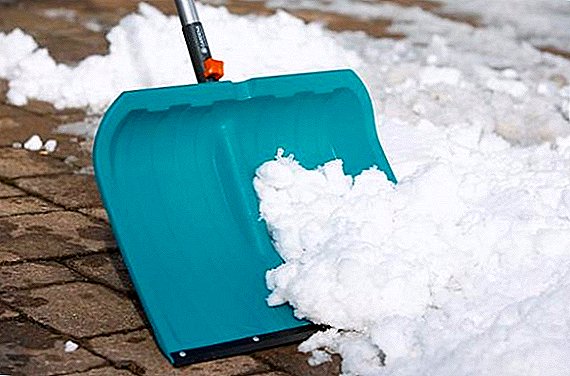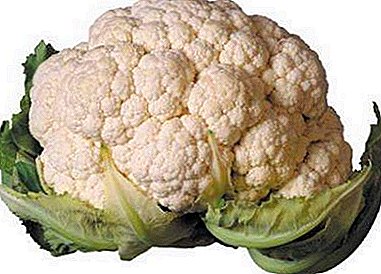 Aronia Aronia refers to the fruit shrub family Pink. Previously, this plant was grown exclusively for decorative purposes, but over time it was found that the fruits of this plant have many medicinal properties.
Aronia Aronia refers to the fruit shrub family Pink. Previously, this plant was grown exclusively for decorative purposes, but over time it was found that the fruits of this plant have many medicinal properties.
Also chokeberry is unpretentious in care, which makes it an excellent garden plant, and today it can be found in many gardens.
Did you know? Translated from the Greek, the name of this plant is translated as "benefit", "help".
The homeland of this shrub is North America. Although this type of chokeberry is called chokeberry, they have almost no similarities. The only thing that unites them is belonging to the same family. Also, this plant is often referred to as the blackfly.
How to choose chokeberry chokeberry seedlings when buying
 Much depends on planting material: if you purchased a low-quality seedling, then you will not see a beautiful plant, no matter how you look after it. It is best to take planting material from reputable manufacturers and avoid buying seedlings from hands.
Much depends on planting material: if you purchased a low-quality seedling, then you will not see a beautiful plant, no matter how you look after it. It is best to take planting material from reputable manufacturers and avoid buying seedlings from hands.
Contact your local nursery or use the services of trusted companies that send chokeberry saplings by mail.
The purchase should not be postponed for the spring, it is better to do this in the fall. At this time, the choice is much wider, and the quality of seed will be much better.
Important! When buying, carefully inspect the roots and the above-ground part. They should not have signs of damage.
The roots should be soft to the touch, not dry. After buying the root system, it is best to dip it into a talker or at least pour water on it, and then pack them in a plastic bag. In this form, until the landing they can stay for several days.
Planting chokeberry (rowan) Aronia on the site
Planting chokeberry aronia on your site is not difficult. The procedure is very similar to the planting of other fruit crops.
When is it better to plant
Planting chokeberry usually occurs in the fall, as this is the best time to buy planting material.
Where to plant
 This culture is not demanding on the composition of the soil, it does not fit only saline. But if you want to give Aroni maximum ideal conditions, then it’s better to choose places with neutral, moist loamy soil, and it is desirable that this site was well lit.
This culture is not demanding on the composition of the soil, it does not fit only saline. But if you want to give Aroni maximum ideal conditions, then it’s better to choose places with neutral, moist loamy soil, and it is desirable that this site was well lit.
Important! The root system of the black chokeberry is superficial, only 50-60 cm deep, so there is no need to be afraid of the close occurrence of groundwater.
Preparatory procedures and landing aronia
For chokeberry, it will be enough to prepare a hole with a diameter and depth of 50-60 cm. When digging up, put a fertile layer of soil in one direction, and lower layers - in another. Nothing needs to be added to the lower part of the land, the root system will be almost impossible to get there.
But in the top layer you need to add:
- 1 bucket of humus;
- 100 g of superphosphate;
- 60 grams of potassium sulphide.
 Pour the lower part of the earth into the hole, then lower the seedling there. After that, fill the pit with the mixture. At the same time, the root neck needs to be deepened by no more than 15 mm.
Pour the lower part of the earth into the hole, then lower the seedling there. After that, fill the pit with the mixture. At the same time, the root neck needs to be deepened by no more than 15 mm.Then the seedling is watered with one bucket of water. After this, it is desirable to mulch the earth with sawdust, humus and dry earth.
Did you know? Planting chokeberry is possible in the spring. The best month for this procedure is April.
Nuances of seasonal care for chokeberry Aronia
Chokeberry does not apply to capricious plants, seasonal care will not take you much time. The plant just needs to be watered in time and carry out preventive treatments from pests.
Protection aronii from pests and diseases
The first treatment of chokeberry is carried out in early spring, while Aronia has not yet dissolved the buds. The plant is sprayed with Bordeaux liquid (1% solution). This procedure will protect the plant in spring and summer.
The same procedure is carried out in November, after the leaves fall.
How to conduct watering
Watering should be carried out at the beginning of the growing season, especially in the absence of rain and in the heat. Also watering chokeberry especially needed at the stage of formation of the fruit. Grooves are made around the bushes (at a distance of 30 cm from the crown's projection), and 2-3 buckets of water are poured in there.
 Loosening the soil is best done after irrigation, when the soil is wet. At this time, it is also necessary to remove all weed grass. the first loosening is carried out in early spring, then during the summer this procedure must be repeated 4-5 times. Loosening depth - 6-8 cm.
Loosening the soil is best done after irrigation, when the soil is wet. At this time, it is also necessary to remove all weed grass. the first loosening is carried out in early spring, then during the summer this procedure must be repeated 4-5 times. Loosening depth - 6-8 cm.
What to spend feeding
Growing chokeberry also involves timely feeding. During the season it must be fed three times.
Each time the composition of the feeding will be different, so consider them all separately:
- First feeding held in spring when the leaves bloom. “Effecton” is used as a fertilizer, 2 tablespoons per 10 liters of water. Young plants will be enough 5 liters of solution, and fruiting plants need to make 2 buckets per bush.
- Second feeding strengthens flowering, and is held at the very beginning. For 10 liters of water, dilute 2 tablespoons of Ross fertilizer and 1 tablespoon of potassium sulfate. 2 buckets of water can be spent on a fruiting shrub, and 6-8 liters will be enough for a young plant.
- Third dressing held after picking berries in the fall. To do this, take 2 tablespoons of potassium sulfate and superphosphate and dilute them in 10 liters of water. Young plants make 1 bucket of solution, and fruiting - 2.
When to collect the fruits of chokeberry
 Fruits of chokeberry begin to fill with color as early as August, but they will have a very astringent and tart taste, therefore they cannot be called mature. The berries continue to ripen until the end of September, and although there is still a little tartness in them, the fruit tastes much juicier and sweeter, so it is best to pick the fruit at this time.
Fruits of chokeberry begin to fill with color as early as August, but they will have a very astringent and tart taste, therefore they cannot be called mature. The berries continue to ripen until the end of September, and although there is still a little tartness in them, the fruit tastes much juicier and sweeter, so it is best to pick the fruit at this time.
Sanitary and formative pruning
Pruning of mountain ash is mainly done in spring, but there is also a pruning scheme in autumn. If you ignore this procedure, the plant will quickly lose its decorative appearance, and flowering will be sluggish and poor. Therefore, the adjustment of the number of branches and the height of the bush for chokeberry is obligatory.
Spring pruning
If you didn’t know how to cut the chokeberry, then do not worry - there is nothing complicated about it. In the first spring, the saplings are pruned at a height of 15-20 cm. Next year there will be young growth, from which it is necessary to leave a few strong branches and level them in height, and cut off the rest of the growth at the base.
A year later, again add several branches to the bush and level them in height. Repeat this procedure until the number of branches reaches 10-12, then we can assume that the black chokeberry has been formed.
In addition, a thinning pruning is performed, which in combination is also sanitary. The main objective of this procedure is to remove unnecessary shoots, so that the light penetrates well into the bush. To do this, you must remove the competing shoots that grow deep into the crown, as well as dried, broken and diseased shoots.
Branches of chokeberry are younger than 8 years old, therefore the shoots that have reached this age must be cut out, and in its place an advanced shoots from root shoots should be left. 
Important! Try to make several replacements annually, without increasing the diameter of the base of the bush.
It is necessary to remove old branches as close as possible to the ground in order to minimize the risk of pests or pathogens appearing on the stumps. If, in your opinion, the entire shrub has already lost its appearance, then radical rejuvenating pruning takes place - cut down all the branches, despite the age, and when new growth begins to form in their place, begin to form a new shrub.
Autumn pruning
 Pruning of mountain ash, if necessary, is done in the fall, if, after harvesting, broken branches are found or some shoots are affected by pests. Slices of thick branches must be treated with a garden solution.
Pruning of mountain ash, if necessary, is done in the fall, if, after harvesting, broken branches are found or some shoots are affected by pests. Slices of thick branches must be treated with a garden solution.
But, with the exception of these situations, pruning chokeberry chokeberry is carried out in the spring.
How to prepare young bushes of chokeberry for winter
Adult black chokeberry bushes are resistant to frost, but young bushes need to bend down. To do this, stakes are driven into the ground, and branches tied with twine are tied to them by several branches. In winter, snow accumulates on them and prevents the root system from freezing..
It is worth starting a shelter with the onset of the first frost, when the soil begins to freeze, but the temperature does not exceed 10-15 ° C of frost. For this black chokeberry will thank you for a rich harvest and become a good decoration in your garden. 


